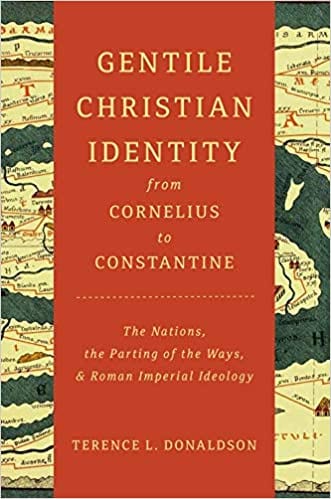Q. Let’s talk about the threefold way you have broken down the earliest Jewish followers of Christ and their approach to the issue of Gentile inclusion. P. 315 provides us with a good summary of what was previously argued with the three main views being: 1) the view that Christ is the messiah of Israel, and gentiles being brought into his following are being brought into Israel and into the keeping of the Mosaic covenant, even including circumcision and all 613 commandments; 2) the Christ following Jews are the righteous remnant of Israel and Gentiles are being brought into relationship with the remnant replacing those Jews who have rejected Christ. 3) Christ as having inaugurated a new era or new covenant in which traditional distinctions between Jews and Gentiles have been transcended with the nature of the Mosaic covenant reworked and reinterpreted on the basis of the new belief in Christ. 1) above seems to comport rather well with the portrayal of the Judaizers in Galatians, and the Pharisaic followers of Jesus in Acts 15.1ff. 2) or 3) above might be seen as the views of James, John and other early Jewish leaders of the movement, but the decree in Acts 15 as well as Josephus’ portrayal of James the Just suggests that while James himself remained Torah true, perhaps especially for the sake of the witness to Jews in Judaea, he did not think Gentiles were required to keep the entire Mosaic law. What I do not really see in 1)-3) is room for the more radical statements of Paul in the capital Paulines or for that matter for the views of the author of Hebrews who seems clearly to be a Jew and yet argues that the Mosaic covenant is obsolete and the new covenant is now something that can be considerably distinguished from much of the Mosaic covenant, especially in regard to the boundary matters like circumcision which is after all the sign of the Mosaic covenant. Am I right about this analysis? I doubt even the author of Hebrews would be happy with the term supercessionism, for he is likely addressing Jewish followers of Christ, and he would see Christ’s people as the completion rather than the replacement of God’s people.
A. I admit that these are rather broad categories, which could have been developed in a more fine-grained way. But since my overall purpose here had to do with the range of ascribed identities that would have been perceived by gentiles, they were adequate for my purposes as heuristic categories. In any case, my intention was that the approaches you refer to (Paul, in some of his statements at least; Hebrews) would belong in the third category (Christ as having inaugurated a new era or new covenant in which traditional distinctions between Jews and gentiles have been transcended, with the nature of the Mosaic covenant reworked and reinterpreted on the basis of the new belief in Christ.)
Certainly there are elements of ambiguity. If Matthew’s intention in 28:19 (make disciples of panta ta ethnē) was that the distinction between Israel and the gentile nations was no longer relevant, so that the new community of disciples was drawn from “all the nations” without distinction, then Matthew would belong to the third category. But if ta ethnē retains its distinctive Jewish sense (“all the non-Jewish nations”), then Matthew is either categorically anti-Judaic (the whole of Israel is rejected) or this mission to the ethnē is a supplementary thing, not displacing the mission to “the lost sheep of the house of Israel” (chap 10) but somehow standing alongside it. (In alignment with scholars such as A.-J. Levine, Matthias Konradt, Axel von Dobbeler and Anders Runesson, I find myself increasingly convinced of the latter reading.) For the purposes of my project, it is not necessary to make a decision in cases such as this. Put more strongly, where several different interpretations are at least possible, it is best to let them stand. The fact that writings such as Matthew can be read in different ways suggests that, from the standpoint of subsequent gentile readers, several different “ascribed identities” might have been inferred from the same writing.












